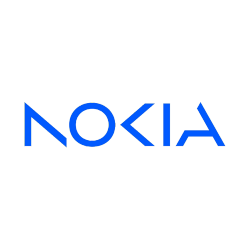
Introduction to HTC Desire X
The HTC Desire X, an Android smartphone released in October 2012, quickly gained popularity due to its combination of functionality and affordability. Catering to users seeking a mid-range device, the Desire X offered a variety of features that were appealing at its launch. In this article, we provide an in-depth exploration of the HTC Desire X’s design, display, hardware, camera capabilities, software, connectivity options, battery performance, and additional features to give you a comprehensive view of this device.
Design
The HTC Desire X boasts a sleek and compact design, measuring 118.5 x 62.3 x 9.3 mm and weighing only 114 grams. This makes the device not only portable but also comfortable to hold. The device was made available in a range of colors, including White/Black and Prussian Blue, appealing to a broad audience with different aesthetic preferences. It was offered in both single SIM and dual SIM options, allowing for great flexibility in usability to accommodate different user needs.
Display
Featuring a 4.0-inch Super LCD display, the HTC Desire X has a resolution of 480 x 800 pixels. This results in a pixel density of approximately 233 pixels per inch, ensuring crisp and clear visuals for its size category. The screen occupies about 61.7% of the device’s front surface, providing users with sufficient space for navigation and entertainment purposes. The display’s contrast ratio of 1275:1 (nominal) and 1.878:1 under sunlight demonstrates decent performance in different lighting conditions.
Hardware
Powered by the Qualcomm MSM8225 Snapdragon S4 Play chipset, the HTC Desire X integrates a dual-core 1.0 GHz Cortex-A5 CPU. Additionally, the Adreno 203 GPU handles graphical tasks effectively for the device's intended market. It comes with 768MB of RAM, which stands as adequate for light to moderate multitasking and basic applications. The device offers 4GB of internal storage, expandable via a dedicated microSDHC slot, providing users with the flexibility to increase storage capacity as needed.
Camera
The main camera on the HTC Desire X is a 5-megapixel sensor equipped with autofocus and an LED flash, enabling users to capture images with good quality in well-lit conditions. The camera supports video recording at 480p@30fps, which is modest but suitable for basic video needs. However, there is no front-facing camera, which limits the device's capability for video calling or selfies.
Software
Initially running on Android 4.0 (Ice Cream Sandwich), the HTC Desire X is upgradable to Android 4.1.1 (Jelly Bean), offering users access to improved features and performance enhancements with the upgrade. It utilizes the HTC Sense UI 4, providing a distinct user interface experience that is both intuitive and customizable, enhancing the overall user interaction with the device.
Connectivity Options
In terms of connectivity, the HTC Desire X supports GSM / HSPA technologies. It provides 2G GSM bands (850/900/1800/1900 for both single and dual-SIM models), and 3G bands (HSDPA 900/2100). The device supports HSPA speeds of up to 7.2/5.76 Mbps, which was quite acceptable during its release period. Other connectivity features include Wi-Fi 802.11 b/g/n, DLNA, hotspot capability, Bluetooth 4.0 with A2DP and aptX, GPS with A-GPS support, and a stereo FM radio with RDS. For physical connections, the device uses a microUSB 2.0 port.
Battery Performance
The HTC Desire X is equipped with a removable Li-Ion 1650 mAh battery. The battery life is quite satisfactory for its class, providing up to 833 hours of standby time on 2G and up to 750 hours on 3G. For talk time, users can utilize the device for up to 20 hours on 2G and about 10 hours on 3G networks. These specifications indicate that the device is capable of lasting a full day under moderate use, which is a significant plus for users on the go.
Sound and Audio
The device includes a loudspeaker and a standard 3.5mm headphone jack, ensuring compatibility with most audio accessories. The loudspeaker offers decent performance with voice, noise, and ring measured at 63dB, 61dB, and 69dB respectively. Its audio quality in terms of noise and crosstalk are reported at -81.0dB and -80.0dB, respectively, which are respectable numbers for a mid-range device.
Sensors and Additional Features
The HTC Desire X includes basic sensors such as an accelerometer and proximity sensor, which are utilized for functionality like auto-rotate and adjusting screen brightness during calls. Although not packed with an excessive range of sensors, the inclusion meets the standard needs for most users.
Market Position and Pricing
When launched, the HTC Desire X was priced around 190 EUR. Positioned as a mid-range model, this pricing was competitive in reaching users looking for a reasonable balance between cost and features. It attracted attention from consumers seeking functionality in a reliable package without reaching the price range of high-end smartphones of that time.
Conclusion
The HTC Desire X was a notable offering within the mid-range smartphone market at the time of its release. It provided a balanced mix of hardware and software capabilities that appealed to users who desired more than basic functionalities without delving into the higher price brackets of flagship devices. Key highlights of the device include its compact design, expandable storage options, and satisfactory battery performance. Although it may no longer hold its own against today's advanced smartphones, the Desire X served as a robust device that met the needs of many during its active years on the market.
Key Features of HTC Desire X
- Compact Design: Dimensions of 118.5 x 62.3 x 9.3 mm and weight of 114 g, making it lightweight and easy to handle.
- Display: 4.0 inches Super LCD with a resolution of 480 x 800 pixels, offering clear and vibrant visuals.
- Processor: Powered by a Dual-core 1.0 GHz Cortex-A5 CPU and Qualcomm MSM8225 Snapdragon S4 Play chipset.
- Software: Runs on Android 4.0 (Ice Cream Sandwich), upgradable to 4.1.1 (Jelly Bean) with HTC Sense UI 4.
- Camera: 5 MP main camera with autofocus and LED flash, capable of 480p video recording at 30fps.
- Audio: Includes loudspeaker and 3.5mm audio jack, ensuring good sound quality.
- Connectivity: Wi-Fi 802.11 b/g/n, DLNA, hotspot, Bluetooth 4.0 with aptX, GPS, and stereo FM radio with RDS.
- Battery: Removable Li-Ion 1650 mAh battery with impressive standby and talk time.
- Customization Options: Available in multiple colors including White/Black and Prussian Blue.
- Additional Features: Supports microSDHC cards, providing extra storage capacity.
HTC Desire X Drawbacks
- Limited internal storage of 4GB with only 768MB RAM, which might restrict performance and app installations.
- Low-resolution main camera at 5 MP with video capability up to only 480p @ 30fps.
- No front/selfie camera available.
- Outdated operating system (Android 4.0 Ice Cream Sandwich, upgradable to 4.1.1 Jelly Bean) with limited modern app compatibility.
- Slower performance chipset (Qualcomm MSM8225 Snapdragon S4 Play) with a dual-core 1.0 GHz Cortex-A5 CPU.
- Relatively small battery capacity at 1650 mAh, with an old endurance rating of only 42 hours.
- Discontinued status, meaning no official support or updates from the manufacturer.
- Screen resolution is limited to 480 x 800 pixels with a modest pixel density of ~233 ppi.





















View Also
More Phones
All Rights Reserved +14266 Phones © Mobilawy 2025

























